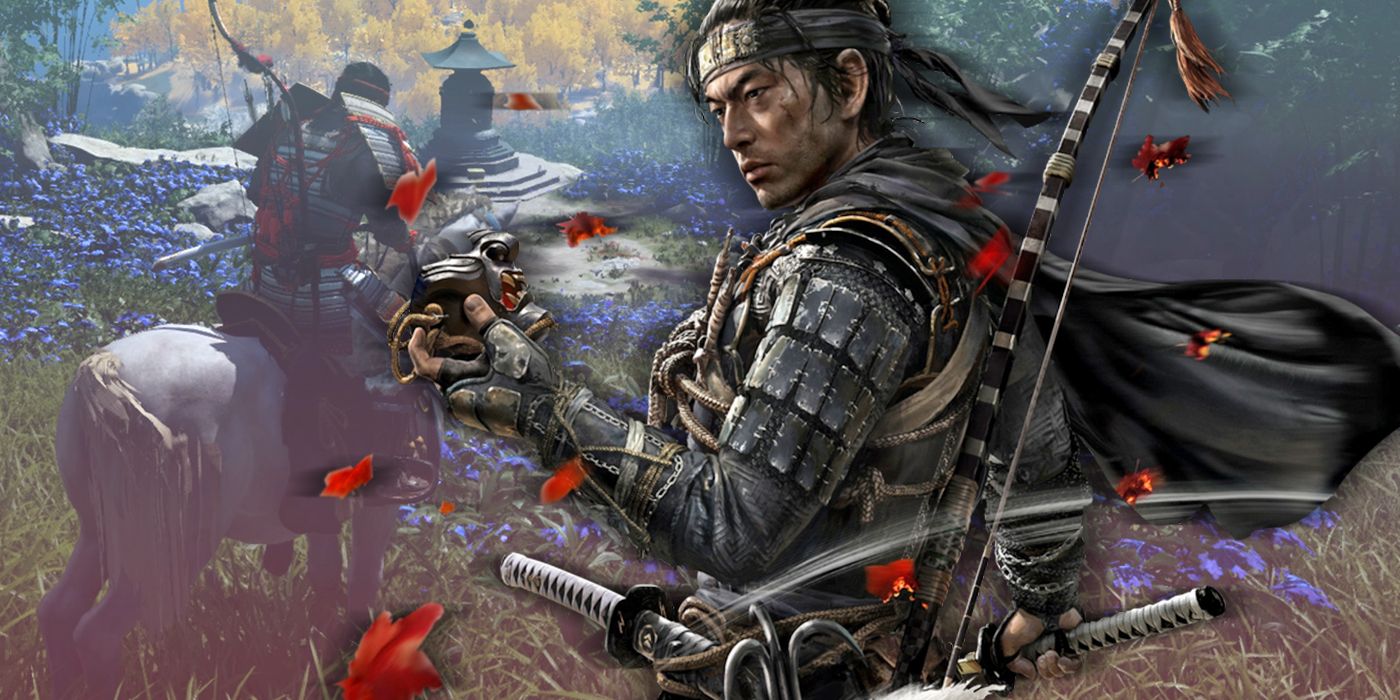

The hallucinogenic experience forces him to confront his journey during the main story and his personal history prior. The DLC’s story is primarily used as a character study of Jin Sakai.

While not entirely unrelated to the Mongol invasion of Tsushima, it feels like a far-off threat by comparison. A sudden journey to an entirely different island doesn’t exactly feel like something Jin should be doing. Act 2 begins by presenting a few new narrative threads that feel like they would take precedence. But much as with the difficulty spike, the soonest possible entry point isn’t necessarily the most ideal. From any point after the beginning of Act 2, Jin can access the questline that leads to Iki. It’s written in such a way as to sidestep a definitive answer. The optimal placement for the DLC within the game’s story is a rather subjective decision. The foes on Iki are meaner than the Tsushima forces. Access to better armour, upgrading your weapons, and unlocking new skills will require plenty of prior exploration.
#Ghost of tsushima bonus content upgrade#
While the main story will unlock the Ghost Stance, it will do little else to fully upgrade the player. However, this is with the caveat that players should also engage in a fair amount of side content. Nearing Act 2’s conclusion is my personal recommendation on when to start the Iki Island DLC when factoring in difficulty. At the very least, it seems more tailor-made for the player’s likely strength near the end of Act 2. The game actively encourages players to accumulate more upgrades and gear before advancing.

While understandable that the game did not wish to lock out veteran players until after Act 3, it feels premature. Having the DLC be just as difficult as the endgame is rather drastic for Act 2. This is an aspect of the DLC that somewhat contradicts its initial placement in the game. While by no means overly difficult, it could catch players unaware, especially on Lethal Difficulty. Add on to that the seeming increase to the enemies’ damage and health, and suddenly the challenge becomes apparent. The island is filled with new enemy types, as well as some locations more heavily guarded than those on Tsushima. Before journeying to the island, players are given an on-screen warning to anticipate stronger foes on Iki. Much like the main story of this DLC, most of the side narratives you'll come across are quite strong and feel like they have a legitimate purpose to play within the larger conflict happening in the region.One factor that the game is upfront about is the spike in difficulty the DLC presents. Along with these secondary objectives, side missions that you can complete for the denizens of Iki Island are also contained in this expansion. These moments are surprisingly sweet and there aren't too many of them, which keeps them feeling fresh. The most notable of these new events involves animal sanctuaries, which will allow you to play tunes for various animals you may come across. While many of these are similar to what was seen in the base game (bathing in a hot spring, chopping bamboo, writing haikus), other new tasks have also been added. Outside of the main path, Iki Island has a lot of additional chores that you can take on as well. Iki Island explores Jin on a level that Ghost of Tsushima's mainline narrative beats fail to touch on. The result is a narrative that isn't just great from beginning to end, but it's also one that did more to make me appreciate Jin's character than ever before. Iki Island does away with many side characters from the original game to tell a story that ties back in with Jin, his father, and those who were responsible for the death of Jin's dad. Part of that was because I felt as though Jin never got his own time to shine in many instances. The throughline narrative that Ghost of Tsushima tells never clicked with me when I originally played it. What I think I enjoyed the most about Iki Island in Ghost of Tsushima Director's Cut was the storytelling, which really surprised me.


 0 kommentar(er)
0 kommentar(er)
